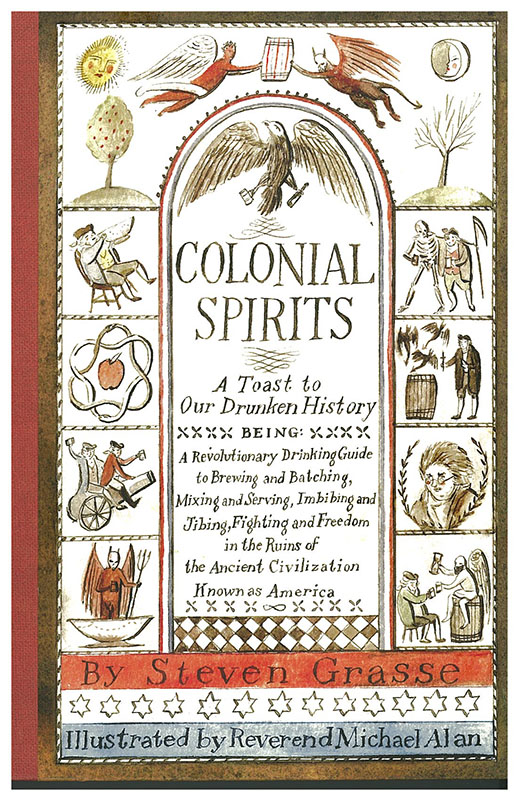Book Review: Colonial Spirits
Imagine a four-month journey with only tainted, salty beer to drink. It is a long and dangerous trip, and at the end of it you get... no beer. All you have to drink is water and whatever juices you can squeeze out of the local plants. If you do want beer or wine, you are going to have to pay through the nose to get it, or wait long months to have the equipment shipped to you. Then you can start to brew and distill the way you used to, though with a great deal of ingredients that are foreign to you thrown into the mash. This leads to entirely new ways to drink - transforming the local apples into cider from industrial waste to producing sugar into a whole new spirit. This was the life of an English citizen when they came to the new world. The colonists brought as much of their culture with them as they could, but had to adapt to the resources they had in the new world. The struggle for the colonists was real, and they chronicled it through many channels, not the least of which were their recipe books. Cocktail historians, always curious about what was going on in the cocktail world before Jerry Thomas started to codify it, have started to explore these resources in greater depth. By digging through vintage recipe books, diaries, and other notes, they have started to put together the details of what was being drunk and how it those drinks were made. Colonial Spirits ($24.95, Abrams Image) is written by Steven Grasse, founder of Art in the Age of Mechanical Reproduction and Tamworth Distilling. The books is accompanied by marvelous illustrations by Reverend Michael Allen, delivers an incredible journey through a time we thought was all tea and rebellion. The journey begins at Plymouth Rock and winds its way through the Industrial Revolution. The book chronicles how Americans drank for over two centuries, through a great deal of trial and error, with the alien landscape of North America. How drinks like whiskey and wine that were once easy to find and common became precious commodities. The chapters are laid out in the order of what colonists could produce as their presence grew, starting with brewing beer with the grains on the east coast and working its way through whiskey as they started moving west. And by "west," they mean Ohio and Kentucky. There are many recipes in the book based off of historical documents, from simple directions for ciders and Spruce Ale to Martha Washington’s Cherry Bounce, which seems like a great way to make alcoholic cherries and a delicious cherry whiskey liqueur. Each chapter is split into two parts; one that talks about the history of the alcohol in question and its context in the culture, and one that has some recipes to get the feel of the flavors that came out of the era.
This is not a stuffy book on what our forefathers drank and why. The balance it forms between educational and entertaining is a delight. Add the whimsical illustration style of Reverend Michael, and this becomes one of the liveliest books on the history of the period that is available. The history is delivered in bite size pieces that give you enough information about the subject, but not so much to overwhelm the reader. They are delivered as stories, not lessons, and they paint a great picture of the era from whence these drinks came. The recipes in the book are all very approachable; not one is so complicated that it cannot be done in your home. Some of the ingredients can be difficult to get, like four quarts of dandelion heads, but not unattainable. There is a page of resources in the back of the book that offer suggestions the modern liquors to use and where to get the herbs they suggest to replicate the recipes. And if the recipe requires a specific flavor profile, there is a recipe for it. If you are in the mood for the Pumpkin Smash, which calls for spiced whiskey, there is a recipe for that particular spice blend in the book. No guessing on what spices are going to be steeped in that bottle.
As far as downsides to a book go, there were not many I found with this one. All of the short stories in the book about Thomas Jefferson, snake oil, and the uses of the Antimonial Cup, while entertaining, can give the reader a disjointed feeling. Like the tale that is being told ends just as it is getting good. Having more books like this on the shelves, with longer stories to tell about the Founding Fathers and their drinking and distilling habits, is a pleasant thought.
This book was looked at for some pretty high honors in the first year that it has been in print. I have found more than a few of these recipes useful in my own experiments with flavor. Whether you are interested in learning a little more about what our ancestors drank, from rye coffee to killdevil, or looking for some cocktail history, this is a great book to add to your collection.



